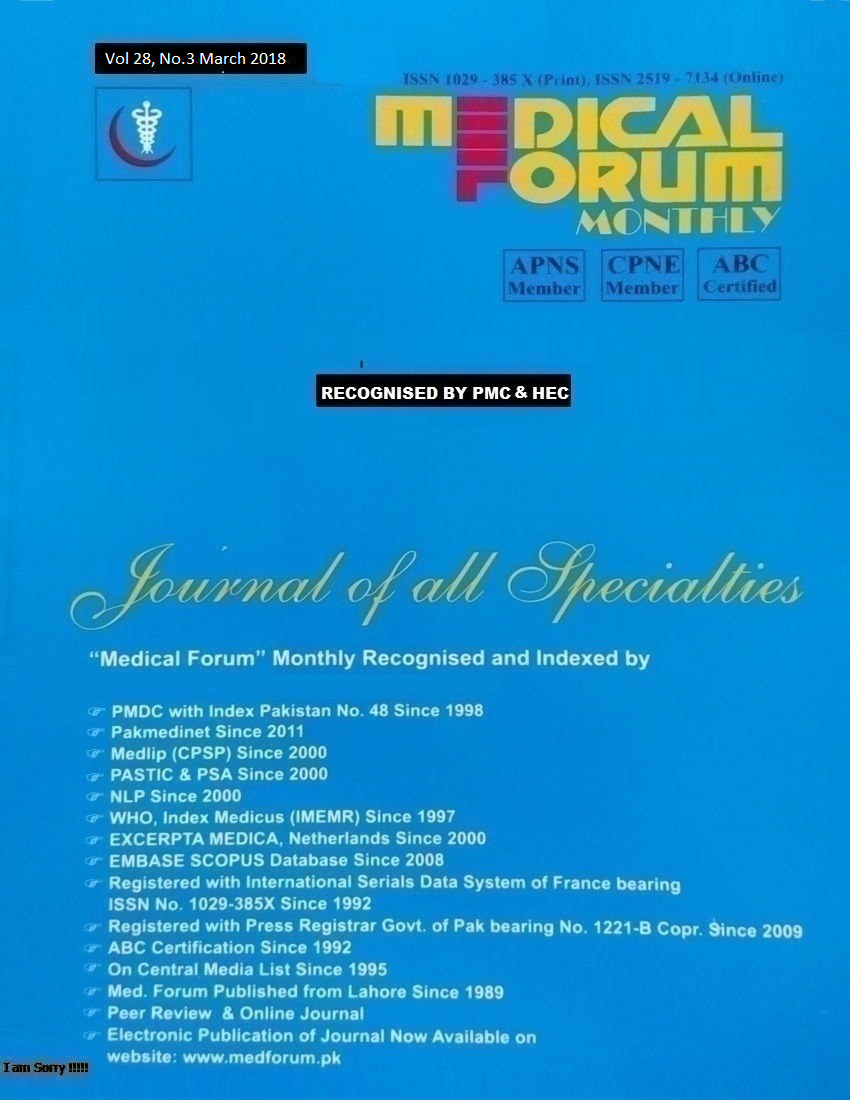
9. Association Between Chewing Tobacco and Lesions of Oral Precancer
Hafiz Muhammad Rafique Tagar1, Saima Aqil2, Dost Muhammad Kalhoro3, Muhammad Abdul Hafeez4 and Farhan Jaleel5
ABSTRACT
Objective: To evaluate the association between different addictive habits and oral premalignant conditions/lesions.
Study Design: Cross sectional Study
Place and Duration of Study: This study was conducted at the Department of Biochemistry in collaboration with Clinical Oncology department of Basic Medical Sciences Institute (BMSI), Jinnah Postgraduate Medical Centre (JPMC), Karachi in 2015.
Materials and Methods: A total of 34 patients visiting the outpatient clinic of clinical oncology department with different addictive chewing habits were included in this study. Initial assessment and diagnosis was made by history and clinical examination which was subsequently confirmed histopathologically. The socio-demographic profile of the patients, type of habit and nature of lesion all were recorded. The collected data was then evaluated for its statistical significance on SPSS version 19.
Results: Out of 34 patients, 55.8% (n=19) were female while 44.2% (n=15) were males. The mean age was 39.1 years and 47% of the patients were in the 21-40 year age group. Gutka chewing was the most prevalent lifestyle habit (41.2%) followed by chaliya (29.4%), naswar (14.7%), and pan (11.7%). Leukoplakia was the most frequent precancerous lesion to be observed (58.8%) followed by oral erythroplakia (29.4%).
Conclusion: The habit of Gutka chewing showed a statistically significant association to the development of oral precancerous lesions and conditions.
Key Words: Oral precancerous lesions, Lifestyle habits, Gutka, Chaliya, Naswar, pan
Citation of article: Tagar HMR, Aqil S, Kalhoro DM, Hafeez MA, Jaleel F. Association Between Chewing Tobacco and Lesions of Oral Precancer. Med Forum 2017;28(3):33-36.
